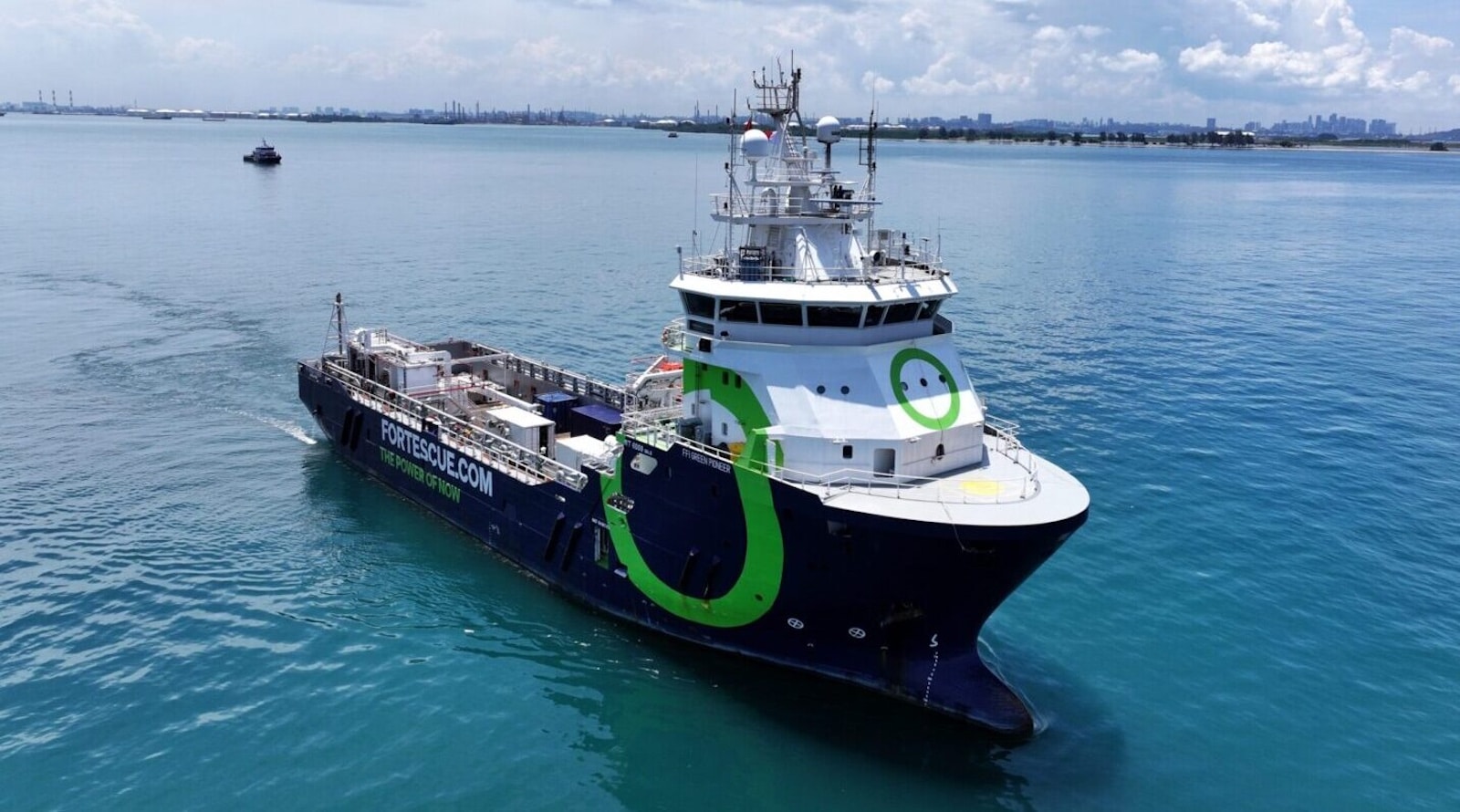Fortescue Determined to Decarbonise International Shipping
Fortescue Takes Bold Steps Toward Zero Emissions

Fortescue Metals Group is ramping up its efforts to achieve “Real Zero” emissions, spearheaded by CEO Dr. Andrew Forrest. The mining giant aims to significantly reduce carbon emissions not only from its operations in Pilbara, Western Australia, but also from the shipping of its iron ore, projected to reach around 200 million metric tons in 2025. Fortescue’s latest Climate Change Report reveals that its iron ore operations and shipping currently emit over 2.5 million tonnes of CO2 annually, highlighting the scale of the challenge ahead.
Transitioning to Ammonia-Powered Shipping
In a groundbreaking move, Fortescue has announced a partnership with Bocimar to charter an ammonia-powered bulk carrier, marking a significant step in its quest for CO2-free shipping. This agreement aligns with Fortescue’s ambitious target of achieving zero scope 3 emissions by 2040, which entails eliminating the use of bunker oil in its bulk ore carriers. The collaboration with Bocimar, a company with over a century of experience in the shipping industry, underscores both companies’ commitment to decarbonizing maritime transport.
The innovative plan involves utilizing solar energy to perform electrolysis, splitting water molecules to produce hydrogen, which will then be converted into ammonia. This ammonia will serve as fuel for a 210,000 deadweight tonnage Newcastlemax vessel, designed specifically for navigating the port of Newcastle in Australia. This vessel represents a significant advancement from the ammonia-powered tugboat, The Green Pioneer, currently operating in European ports. The dual-fuel bulk carrier is expected to be delivered by the end of 2026.
Fortescue’s CEO, Dino Otranto, emphasized the importance of this agreement, stating, “Our landmark agreement with Bocimar sends a clear signal to the market — now is the time for shipowners to invest in ammonia-powered ships.” He noted that the reliance on dirty bunker fuel, responsible for three percent of global carbon emissions, is becoming increasingly untenable. Otranto reiterated the need for shipping regulators to take decisive action to facilitate this transition.
The potential of green ammonia as a shipping fuel is gaining traction due to its zero-carbon combustion and existing infrastructure for handling it. While still in the early stages of acceptance, it is viewed as a viable alternative to fossil fuels. Fortescue’s partnership with Bocimar is just the beginning of a broader initiative to transition its fleet to low and zero-emissions vessels, aiming to accelerate the adoption of green ammonia in the maritime sector.
However, the transition to ammonia-powered shipping is not without its challenges. Concerns about the safety of ammonia, which is toxic to humans and marine life, have been raised. Fortescue reassures stakeholders that it will adhere to established safety protocols for the production, storage, and use of ammonia. As the shipping industry evolves, the need for robust regulations addressing the risks associated with ammonia use will become increasingly critical.
In summary, Fortescue’s commitment to decarbonizing its operations and shipping practices represents a significant step toward a more sustainable future in the mining and maritime industries. The successful implementation of ammonia-powered vessels could pave the way for broader adoption of green fuels, contributing to global efforts to combat climate change.
